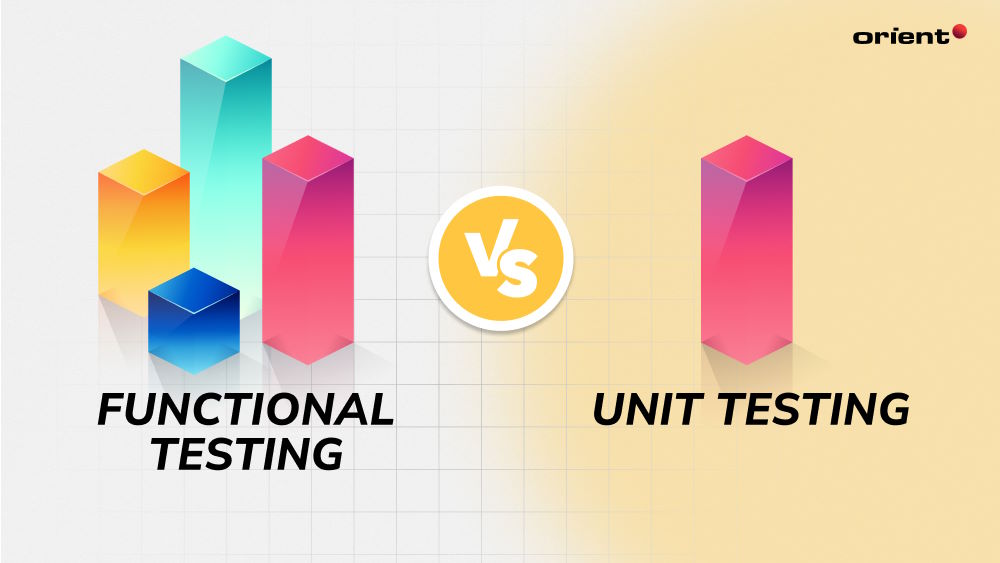
What’s the Difference Between Manual and Automation Testing?
Not sure if you should implement manual or automation testing into your software project? Here is how to choose the right testing method for you.


There are many pairs of software testing methods that are commonly hard to distinguish and often confused over each other, and one among those is unit testing and functional testing. To differentiate these two software testing types, we will have to delve into their definitions, objectives, and also benefits before coming to a unit testing vs. functional testing comparison.
First of all, the definition of each will indicate how they are basically distinct.
It is one type of software testing process. Functional tests check the end-to-end functionality of a software, application, or system against the pre-determined functional requirements and specifications to see if it works as expected. A functional test can be manual testing or automated testing. Functional testing involves the black-box testing systems. technique, and it does not aim to verify the source code.
Functional testing is an umbrella term for various testing types, such as integration testing, system testing, regression testing, acceptance testing, component testing, smoke testing, sanity testing, API testing, UI testing, white-box testing, black-box testing, alpha testing, beta testing, production testing, and also unit testing. Each of them serves different purposes under the same bigger goal of testing the functionality. These functional testing types can be defined briefly as below:
A unit test is also a type of software testing process in which individual units of software, application, or system are tested in isolation. The ultimate goal of unit tests is to validate the source code to check whether the units perform as expected, and unit testing often involves the white-box testing/blog/black-box-and-white-box-software-testing/#:~:text=WHAT%20IS%20WHITE,and%20other%20problems. technique. The unit test and integration test are also mixed up, but they are actually distinctive. A unit test can be manual testing or automated testing but usually automated.
Both functional tests and unit tests are important in software or application testing processes, but they are quite different in their objectives.
Unit tests are often conducted in the development process by software developers or sometimes quality assurance teams. Normally, the developers write test cases and run them to check units of code to ensure they function properly. Unit testing is considered the first level of software testing before moving to integration tests:
Both unit testing and functional testing play an integral part in the development workflow, but the set of benefits they offer also varies.
We have gone through different aspects of unit testing and functional testing, and obviously, they are not interchangeable. But in order to emphasize their distinctive features, let’s look into the differentiating factors that set them apart in this detailed comparison:
| FACTORS | UNIT TESTING | FUNCTIONAL TESTING |
|---|---|---|
| Purpose | Test individual units in isolation. | Test the functionality as pre-defined requirements. |
| Test Coverage | The number of lines of code | The number of requirements fulfilled. |
| Testing Technique | White-box testing. | Black-box testing. |
| Target | Individual units/modules | Functionality of a software/app/system |
| Written By | Developers | QA testers and test engineers |
| Complexity | More complicated to conduct. | Simple and easy to conduct. |
| Changes | At frequency. | Not change much. |
| Number of Test Cases | Higher than other testing types. | Lower than the unit test and integration test. |
| Cost & Maintenance | Low | High |
| When to Use | At the beginning of the development process. | After building the features. |
| Programming Languages | Same as the coding languages. | Can use different programming languages. |
| Automation | Usually, automated. | Both manual and automated testing. |
| Issues Covered | Code errors and edge cases. | Functionality and performance. |
| Tools | Junit, NUnit, Mockito, TestNG | Selenium, UFT, SahiPro |
Not sure if you should implement manual or automation testing into your software project? Here is how to choose the right testing method for you.
This guide is everything about Java integration testing, in which we are going to clarify its concept and what it entails.
Find out what a usability test script is, how to write one, and how Orient Software’s testing services help lower development costs and improve product quality.
Discover the latest software testing trends for 2023, including AI and ML testing, virtual and augmented reality testing, and heaps more.
The choice between production environment vs. test environment depends on various factors. Some businesses choose one of them, some opt for both.



